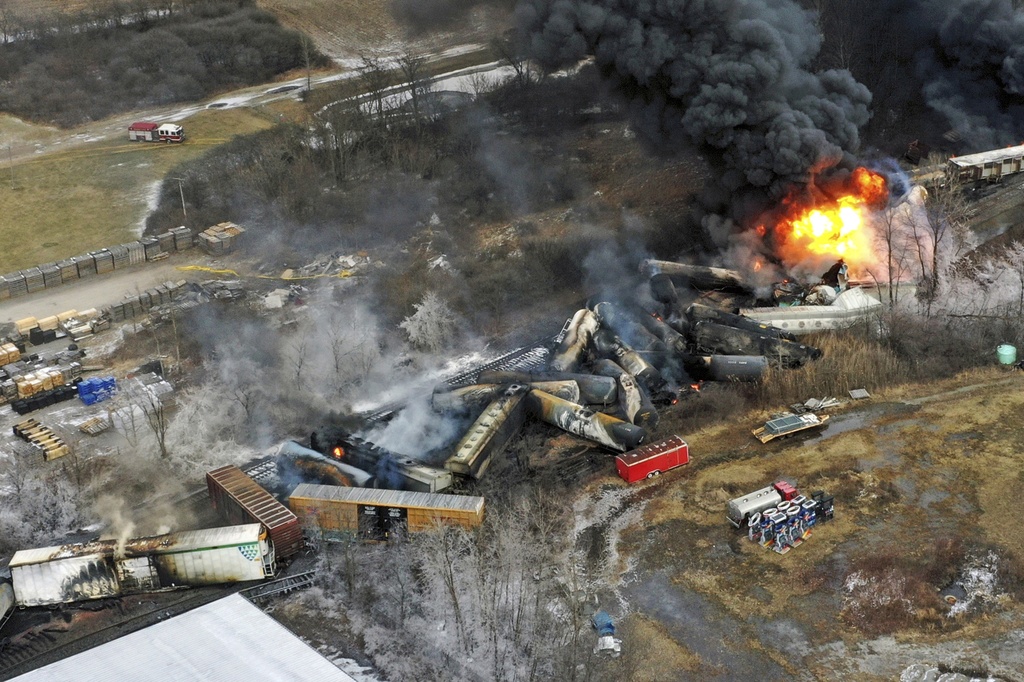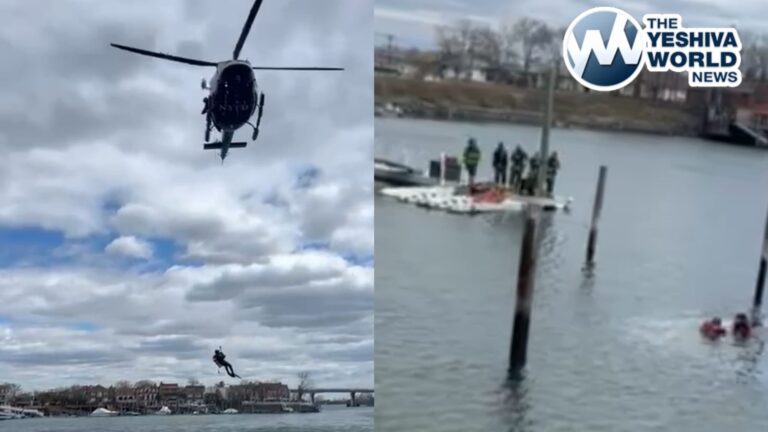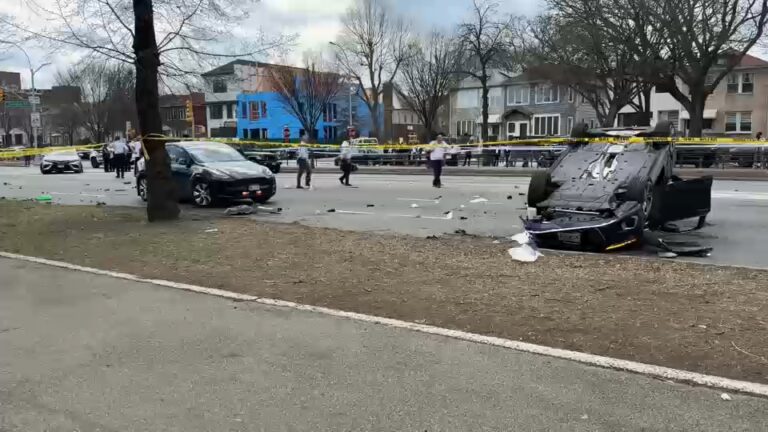Residents of an eastern Ohio village are learning more about the fiery wreck of a Norfolk Southern freight train last year that derailed their lives as another hearing gets underway, with the National Transportation Safety Board set to discuss the ongoing investigation and issue recommendations for averting future disasters.
“On behalf of the entire agency I want to recognize the significant impact this derailment has had,” NTSB Chair Jennifer Homendy Homendy said at the beginning of Tuesday’s hearing. She said some people have tried to minimize the wide-reaching effects of last year’s derailment because there were no deaths, but “the absence of fatality or injury doesn’t mean the presence of safety.”
Michael Graham, a board member who was on the scene after the derailment, said the NTSB’s work would not end after it makes recommendations to prevent future derailments.
“We will continue to pursue and advocate for these safety recommendations until each one is implemented,” he said.
Dozens of freight cars derailed Feb. 3, 2023, on the outskirts of East Palestine near the Pennsylvania border, including 11 carrying hazardous materials. Residents evacuated as fears grew about a potential explosion. Despite potential health effects, officials then intentionally released and burned toxic vinyl chloride from five railcars, sending flames and plumes of black smoke into the air.
The NTSB said early on that an overheated bearing on one of the railcars that was not caught in time by trackside sensors likely caused the crash. Investigative hearings have since highlighted other possible contributors including widespread rail job cuts and rushed inspections. Investigators also delved into why officials chose to deliberately blow open the vinyl chloride cars and burn what is a key ingredient for making PVC pipes.
On Tuesday, NTSB board members confirmed that a trackside detector in Salem, Ohio, failed to accurately detect the overheated rail car bearing that was on fire some 20 miles (32.19 kilometers) before the fiery train derailment in East Palestine last year. They further said that firefighters didn’t get the details of what was on the train for more than an hour after the derailment.
NTSB board members also said that Norfolk Southern and its contractors compromised the integrity of the vent and burn decision by withholding accurate information from OxyVinyls, the company that made the vinyl chloride. They added that Norfolk Southern contractors who recommended blowing open the vinyl tank cars and burning the contents kept pushing for the vent and burn despite available evidence that the tank cars were cooling after the crash.
Board members said there are no standards for how railroads should respond to bearing failure alarms. The NTSB staff said they would recommend that the Federal Railroad Administration establish rules governing railroad responses to the alarms. Though NTSB recommendations aren’t binding, Congress may be willing to enforce some of them because of the spotlight cast on rail safety by the crash.
More than a year ago, a bipartisan group of lawmakers led by Ohio’s two senators proposed a package of reforms including requiring two-person crews and setting standards for the inspections and detectors that help prevent derailments. But that bill stalled in the U.S. Senate under resistance from Republicans and the railroads. GOP leaders in the House have said they didn’t want to consider new rail safety regulations until after the final NTSB report was released.
With limited success, federal regulators also pushed for the railroads to make changes like signing onto an anonymous government hotline to report safety concerns. The industry responded to the crash by promising to install more trackside detectors, review the way they are used and help first responders improve their handling of derailments with more training and better access to information about the cargo.
For his part, Norfolk Southern’s CEO Alan Shaw pledged to “make things right” in East Palestine with more than $100 million in aid to residents and the community. Shaw also hired a consultant from the nuclear power industry to recommend changes and tried to work with labor. Still, critics said Norfolk Southern was too often satisfied in the past with doing only the minimum required for safety and workers reported no big changes in day-to-day operations.
After the derailment, all the major freight railroads pledged work to improve safety by adding hundreds more trackside sensors to help spot problems like overheating bearings and by re-evaluating how they analyze the data from those detectors. The Association of American Railroads trade group said the industry will review the NTSB report and look for additional ways to improve safety. But so far the industry’s efforts haven’t resulted in a significant boost in its safety record in the FRA statistics.
Earlier this year, Homendy told Congress that the agency’s investigation had determined that the controversial vent-and-burn operation that prompted evacuations wasn’t necessary. Experts from the company that made the vinyl chloride, OxyVinyls, testified at earlier NTSB hearings they were certain a feared chemical reaction that could have caused those tank cars to explode wasn’t happening.
But Ohio’s governor, first responders and the hazardous materials experts who made that decision have said the information they had that day made them believe an explosion was likely imminent, making the burn their best option despite the risks of unleashing cancer-causing dioxins in the area.
The chemical manufacturer has declined to comment publicly beyond what its experts testified to last spring.
Norfolk Southern announced last week that it will lead an industrywide examination of how to improve the way vent-and-burn decisions are made in future derailments. That was part of its settlement with the federal government.
The NTSB has also looked at the struggles of first responders who didn’t immediately know exactly what was on the train after 38 cars jumped off the tracks, many spilling their contents and catching fire.
Federal officials finalized a new rule Monday that will require railroads to inform first responders about what is on a train immediately after a derailment. The industry says more than two million first responders now have immediate access to that information via an AskRail app that allows them to look up any train’s cargo.
(AP)











